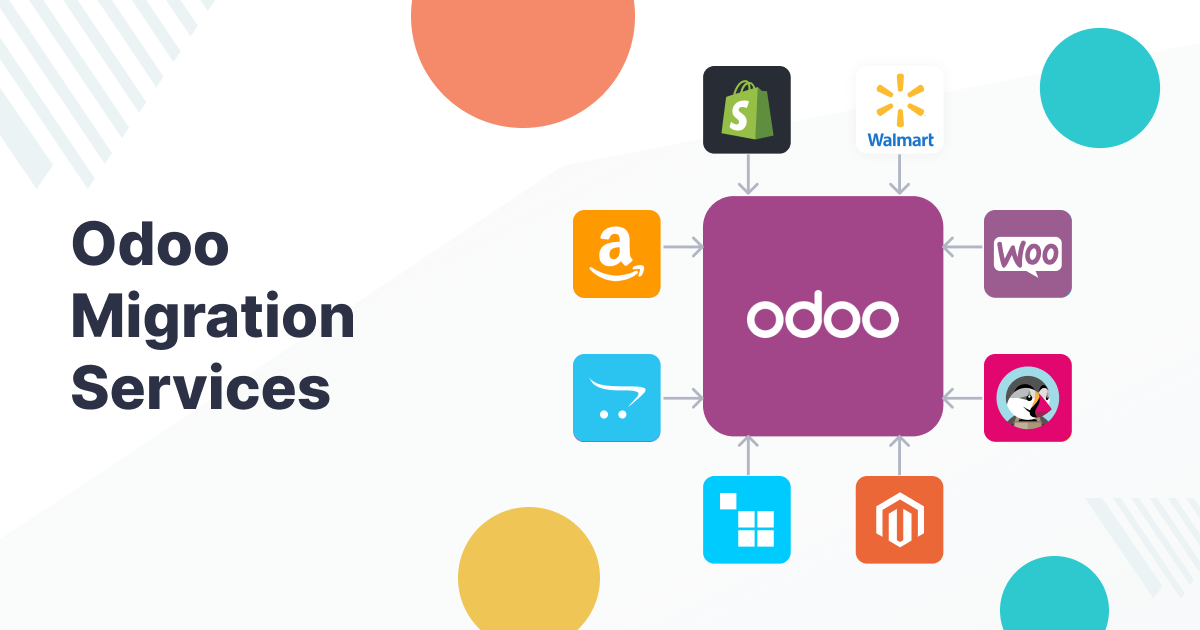Odoo is one of the most popular ERP (Enterprise Resource Planning) solutions used by businesses worldwide. It offers a wide range of features, from accounting and sales management to inventory tracking and project management. However, as your business grows, you may find the need to migrate to a new version of Odoo or move from another ERP system to Odoo. A seamless migration process is essential to ensure that your business operations continue running smoothly. This step-by-step guide will help you navigate through the Odoo migration process efficiently.
Why Migrate to Odoo?
Before diving into the steps of migration, it’s important to understand why businesses choose to migrate to Odoo in the first place. Odoo offers:
- Scalability: As businesses grow, Odoo allows for easy expansion of features and functionalities.
- Integration: Odoo seamlessly integrates with third-party applications, making it a versatile tool for business operations.
- Customization: With Odoo, you can tailor the system to meet specific needs through custom modules and configurations.
These advantages make Odoo a top choice for businesses looking to streamline operations.
Step 1: Assess Your Current System
The first step in any migration process is to assess your current system. Whether you’re upgrading from a previous version of Odoo or moving from another ERP, you must understand:
- Current Business Processes: Document the processes and workflows that your team uses daily.
- Data Structure: Analyze the current data structure, including databases, files, and records.
- Customization Needs: Evaluate any customizations that have been made to your current system and identify how they might translate to Odoo.
Understanding these factors will help you plan the Odoo migration more effectively and ensure that Odoo can accommodate your business needs.
Step 2: Plan the Migration
Once you’ve assessed your current system, it’s time to plan the migration. A detailed migration plan will include:
- Timeline: Establish a clear timeline for each phase of the migration process. This includes setting deadlines for data migration, testing, and go-live.
- Resources: Determine the resources required for migration, such as personnel, technical expertise, and external consultants (if needed).
- Risk Management: Identify potential risks during migration, including data loss, downtime, or system incompatibility. Develop contingency plans for each scenario.
Effective planning is key to minimizing disruption during the migration process.
Step 3: Data Migration
One of the most crucial aspects of the Odoo migration is moving your data from the old system to Odoo. This includes customer data, financial records, inventory data, and more. The steps involved in data migration include:
- Data Mapping: This involves mapping data from your old system to the corresponding fields in Odoo. For example, mapping customer names and addresses from the old CRM to the new one in Odoo.
- Data Extraction and Cleaning: Before migration, it’s essential to clean the data by removing duplicates, correcting errors, and standardizing formats. This will prevent any issues during the migration.
- Data Import: Using Odoo’s import tools, you can upload the cleaned data into the system. This can be done in batches or in one go, depending on the volume of data.
After the data is imported, make sure to verify its accuracy and integrity.
Step 4: System Configuration and Customization
Once the data is in Odoo, the next step is system configuration and customization. Odoo comes with a range of pre-built modules, but businesses often need to customize it to meet their specific needs. Customization could include:
- Setting up Modules: Odoo has various modules for sales, inventory, HR, accounting, and more. Make sure all the necessary modules are installed and configured correctly.
- Custom Features: If your business requires specific functionality, you might need to develop custom modules or tweak the existing ones.
- User Roles and Permissions: Define user roles and permissions to ensure that the right people have access to the right data and tools.
Make sure to test each module and customization thoroughly before moving on to the next phase.
Step 5: Testing and Quality Assurance
Testing is a critical phase in the migration process. During this phase, you’ll need to:
- Run Test Scenarios: Test various business processes such as order processing, invoicing, inventory management, and reporting to ensure they work seamlessly.
- User Acceptance Testing (UAT): Have end users test the system in a controlled environment to ensure that the system meets business needs.
- Bug Fixing and Adjustments: Address any bugs or issues that arise during testing and make necessary adjustments to the system.
Testing ensures that the migration is successful and that the system functions as expected.
Step 6: Go Live and Post-Go-Live Support
After successful testing, it’s time to go live with the new Odoo system. However, the work doesn’t stop here:
- Go Live: Transition from the old system to Odoo, ensuring that all users are on the new platform and that data is being updated in real time.
- Monitor System Performance: During the initial go-live period, monitor the system’s performance closely to identify any issues that may arise.
- Post-Go-Live Support: Provide support to users and resolve any issues or questions they may have in the early stages of using the new system.
Having a support plan in place ensures a smooth transition for your team.
Conclusion
Odoo migration, when done correctly, can lead to significant improvements in efficiency, integration, and scalability. By following a structured, step-by-step process, you can ensure that your business experiences minimal disruption and achieves a successful transition to Odoo. Proper planning, data migration, system configuration, testing, and post-go-live support are all crucial elements of a seamless Odoo migration.

